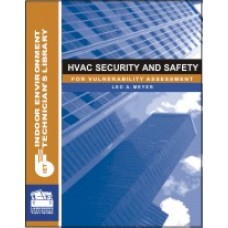Trained Personnel Only
Refrigeration and air conditioning devices are extremely complicated by nature. Servicing, repairing, and troubleshooting these products should be done only by those with the necessary knowledge, training, and equipment.WARNING: Improper servicing can lead to serious injury or death from fire, electric shock, or explosion.
Terminal Venting And Electrocution
Improperly servicing, repairing, or troubleshooting a compressor can lead to electrocution or fire due to terminal venting with ignition. Follow the precautions below to avoid serious injury or death from electrocution or terminal venting with ignition.A. Fire Hazard From Terminal Venting With Ignition
Oil and refrigerant can spray out of the compressor if one of the terminal pins is ejected from the hermetic terminal. This "terminal venting" can occur as a result of a ground fault (also known as a short circuit to ground) in the compressor. The oil and refrigerant spray from terminal venting can be ignited by electricity and produce flames that can lead to serious burns or death. When spray from terminal venting is ignited this is called "terminal venting with ignition."
B. Terminal Venting And Electrocution Precautions
To reduce the risk of electrocution, serious burns, or death from terminal venting with ignition:
Make sure that all power legs are open. (NOTE: The system may have more than one power supply.)
An open fuse or tripped circuit breaker is a strong indication of a ground fault.
Always disconnect power before servicing, unless it is required for a specific troubleshooting technique. In these situations, use extreme caution to avoid electric shock.
Refrigerants And Other Chemicals
Contact with refrigerant, mixtures of refrigerant and oil, or other chemicals can cause a variety of injuries including burns and frostbite. For example, if refrigerant contacts skin or eyes, it can cause severe frostbite. Also, in the event of a compressor motor failure, some refrigerant and oil mixtures can be acidic and cause chemical burns.To avoid injury, wear appropriate protective eyewear, gloves, and clothing when servicing an air conditioning or refrigeration system. Refer to your refrigerant supplier for more information.
If refrigerant or mixtures of refrigerant and oil come in contact with skin or eyes, flush the exposed area with water and get medical attention immediately.
Compressor Removal
Failure to properly remove the compressor can result in serious injury or death from electrocution, fire, or sudden release of refrigerant and oil.Follow these precautions when removing a compressor from a system:
Disconnect all electrical power supplies to the system, making sure that all power legs are open. (NOTE: The system may have more than one power supply.)
Attempting to remove the compressor before removing all refrigerant from the system can cause a sudden release of refrigerant and oil. Among other things, this can:
1. Cause a variety of injuries including burns and frostbite.
2. Cause a fire if a torch is used to disconnect tubing.
3. Expose the service person to toxic gas.
To avoid serious injury or death, be sure to remove and recover all refrigerant before removing the compressor.
Use a tubing cutter to remove the compressor. A torch can cause even trace amounts of refrigerant to decompose and release toxic fumes. In addition, using a torch to remove the compressor can cause a fire. If you ignore this recommendation and use a torch, be prepared to extinguish a fire.

System Flushing, Purging, And Pressure Testing For Leaks
Failure to properly flush, purge, or pressure test a system for leaks can result in serious injury or death from explosion, fire, or contact with acid-saturated refrigerant or oil mists.Follow these precautions when flushing/purging a system or pressure testing a system for leaks:
1. Oxygen can explode on contact with oil.
2. Acetylene can decompose and explode when exposed to pressures greater than approximately 15 psig.
3. Combining an oxidizing gas, such as oxygen or air, with an HCFC or HFC refrigerant under pressure can result in a fire or explosion.
Commercial cylinders of nitrogen contain pressures in excess of 2,000 psig at 70 degrees F. At pressures much lower than 2,000 psig, compressors can explode and cause serious injury or death. To avoid overpressurizing the system, always use a pressure regulating valve on the nitrogen cylinder discharge (see Figure 1). The pressure regulator must be able to reduce the pressure down to 1 or 2 psig and maintain this pressure.
The regulating valve must be equipped with two pressure gauges:
1. One gauge to measure cylinder pressure; and
2. One gauge to measure discharge or downstream pressure.
In addition to a pressure regulating valve and gauges, always install a pressure relief valve. This can also be a frangible disc-type pressure relief device. This device should have a discharge port of at least 1/2-inch MPT size. The valve or frangible disc device must be set to release at 175 psig (see Figure 1).
When field testing a system for leaks, 150 psig is adequate test pressure.
Disconnect the nitrogen cylinder and release the pressure in the system before connecting a refrigerant container to the system. The higher pressure gas in the system can explode the refrigerant container.
System Charging
Failure to properly charge the system can result in serious injury or death from explosion or fire.Follow these precautions when charging a system:
Operating the compressor without a charge in the system can damage the hermetic terminal. As always, to avoid serious injury or death from terminal venting with ignition, never energize the compressor unless the protective terminal cover is securely fastened.
Use only the serial label refrigerant when charging the system. Using a different refrigerant can lead to excess system pressure and an explosion. Use of a refrigerant other than the serial label refrigerant will void the compressor warranty.
Overcharging a refrigeration or air conditioning system can result in an explosion. To avoid serious injury or death, never overcharge the system. Always use proper charging techniques. Limit charge amounts to those specified on the system equipment serial label or in the original equipment manufacturer's service information.
Overcharging the system immerses the compressor motor, piston, connecting rods, and cylinders in liquid refrigerant. This creates a hydraulic block preventing the compressor from starting. The hydraulic block is also known as locked rotor.
Continued supply of electricity to the system causes heat to build in the compressor. This heat will eventually vaporize the refrigerant and rapidly increase system pressure. If, for any reason, the thermal protector fails to open the electrical circuit, system pressure can rise to high enough levels to cause a compressor housing explosion.
Prevention Of Water-Utilizing System Explosions
In certain water-utilizing refrigeration systems, water can leak into the refrigerant side of the system. This can lead to an explosion of system components, including but not limited to, the compressor. If such an explosion occurs, the resulting blast can kill or seriously injure anyone in the vicinity.A. Systems At Risk Of Explosion
Water-utilizing systems that have single-wall heat exchangers may present a risk of explosion. Such systems may include:
Water-utilizing systems that have single-wall heat exchangers present a risk of explosion unless they have either:
B. How An Explosion Occurs
If the refrigerant tubing in the heat exchanger develops a leak, water can enter the refrigerant side of the system. Water entering the refrigerant side can come in contact with live electrical connections in the compressor causing a short circuit or a path to ground. When this occurs, extremely high temperatures can result. The heat buildup creates steam vapor that can cause excessive pressure throughout the entire system. This system pressure can lead to an explosion of the compressor or other system components.
C. Service Procedures
In light of the risk of explosion, be especially alert for signs of water leaking into the refrigerant side of the system. Whenever servicing or troubleshooting a water-utilizing system, always check to see if it has either a pressure relief valve or a high pressure cutout as previously described. If the system does not have at least one of these, DISCONNECT ALL ELECTRICAL POWER and look for indications that water has leaked into the refrigerant side of the system. These indications may include:
If ANY of these indications are present, do the following checks to determine if water has leaked into the refrigerant side:
Step 1: Check for a ground fault (a short to ground).
Check the compressor for a ground fault (also known as a short circuit to ground).
Step 2: Check for water in the system.
Once the compressor is cool to the touch, open the system process valve slightly to see if any water comes out of the system. WARNING: Opening the system process valve while the compressor is hot can cause severe burns from steam coming out of the valve.
If ANY water comes out of the process valve, the entire system must be replaced. See “D. Replacing A Single-Wall Water-Utilizing System.”
If water does not come out of the process valve, there is still a possibility that some water has leaked into the refrigerant side of the system. To address this possibility, determine if the system has a history of losing refrigerant charge without a leak being found or repaired.
If you find ANY indication of a history of losing refrigerant charge without detection of a leak, this is a sign that refrigerant has leaked in the water inside the heat exchanger. The entire system must be replaced. See “D. Replacing A Single-Wall Water-Utilizing System.”
If you do not find any indication of a history of loss of charge without detection of a leak, you still need to install:
Also, if you found a ground fault in the compressor in Step 1, replace the compressor before applying power to the system.
D. Replacing A Single-Wall Water-Utilizing System
When replacing a single-wall water-utilizing system, replace the system with one that has:
Start Capacitor Overheating
An overheated start capacitor can burst and spray or splatter hot material which can cause burns. Applying voltage to a start capacitor for more than a few seconds can cause the capacitor to overheat.Check capacitors with a capacitance meter, and never check a capacitor with the power on.
System Evacuation
Never use a compressor to evacuate a system. Instead, use a high vacuum pump specifically designed for that purpose.Never start the compressor while it is under deep vacuum. Always break a vacuum with refrigerant charge before energizing the compressor.
Failure to follow these instructions can damage the hermetic terminal. As always, to avoid serious injury or death from terminal venting with ignition, never energize the compressor unless the protective terminal cover is securely fastened.
Follow The Labels
Compressors have labels and markings with important information. For your safety and the safety of others, read the labels and markings on the product.Reprinted with permission from the Tecumseh Hermetic Compressor Service Handbook. For more information, visit www.tecumseh.com.
Publication date: 08/11/2003








